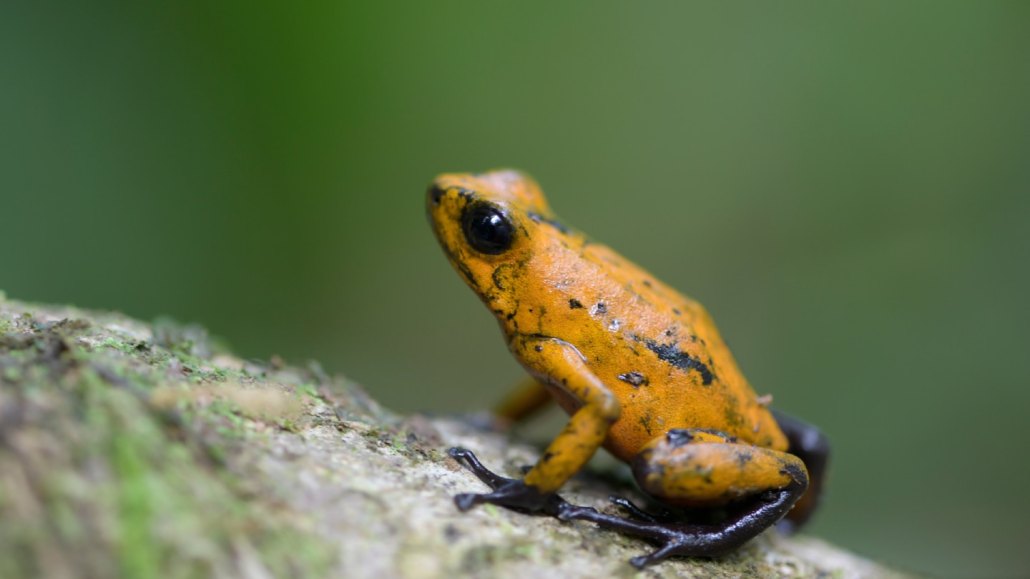
Diablito poison dart frogs (one pictured) accumulate their trademark chemical defenses with the help of a toxin-binding protein that transports poisonous compounds from food to skin.
Marie-Therese Fischer (CC BY 4.0)
- More than 2 years ago
Read another version of this article at Science News Explores
Toxins found in the skin of poison dart frogs may hitch a ride there via molecular taxicabs.
As a group, poison dart frogs (Dendrobatidae) host an assortment of more than 500 poisonous compounds called alkaloids that the amphibians acquire from a steady diet of insects (SN: 9/3/03). But how these toxins, which help to fend off predators, make it from a frog’s intestines to its skin has been a mystery.
Now, scientists have pinpointed a protein that can give at least some poisons a ride. The protein, dubbed alkaloid binding globulin, or ABG, might pick up alkaloids from a frog’s blood or intestines and transport the toxins to the skin as a chemical defense, researchers report December 19 in eLife. The newly identified protein shares similarities with other proteins that transport hormones in mammals. Such a resemblance might help scientists develop comparable proteins that could, for example, soak up toxins to treat human overdoses.
It’s the first time researchers have identified a protein that transports poisons around dart frogs’ bodies, says Roberto Márquez, an evolutionary geneticist and herpetologist at the University of Michigan in Ann Arbor who was not involved in the work.
Researchers have long thought that there must be a big metabolic component to how “poison frogs exist just as a ball of toxins,” Márquez says. Proteins capable of binding to alkaloids were primary suspects, he says, because that would allow you to get toxins from your diet, “move them to your skin and not die trying.”
Biologist Aurora Alvarez-Buylla of Stanford University and colleagues managed to find one such alkaloid binding protein by going fishing with molecular bait. In lab dishes, the team mixed a chemical lure similar to a well-studied poison frog alkaloid called pumiliotoxin with the liquid portion of blood from Diablito poison dart frogs (Oophaga sylvatica). ABG emerged as the most common frog protein attached to the bait. The researchers also identified similar proteins from two other species.
In test tubes, the newfound protein showed an affinity for pumiliotoxin, soaking up much of the available alkaloid. Genetic analyses of wild Diablito frogs collected in Ecuador suggest that ABG is made in frog livers. Additional experiments using fluorescent markers to locate the protein in tissues suggest that ABG then makes its way from the liver to the intestines and skin.
But ABG is a “biochemically promiscuous” protein, Alvarez-Buylla says. In the lab, it also bound other poison dart frog toxins like epibatidine and decahydroquinoline. That’s surprising, she says, given that some proteins tend to be specific about the kinds of small molecules that they attach to. And there are still hundreds more toxins that the team didn’t test, so “there’s definitely more to explore there.”
Márquez agrees. It’s certainly an open question just how many toxins ABG can pick up, he says, and whether it’s common across the entire poison dart frog family tree.
Also unknown is how the protein accomplishes its job. Perhaps ABG has a precise mechanism for when it picks up and releases poisonous compounds, Márquez says, “or maybe the frogs resist them anyway and this is just like the little cart that transports stuff around.” With one case “very beautifully figured out,” he’s excited to understand how poison dart frogs handle all their myriad toxins.






